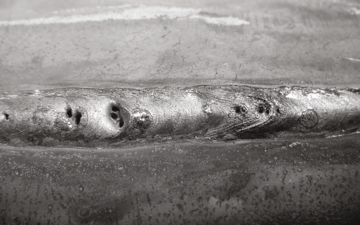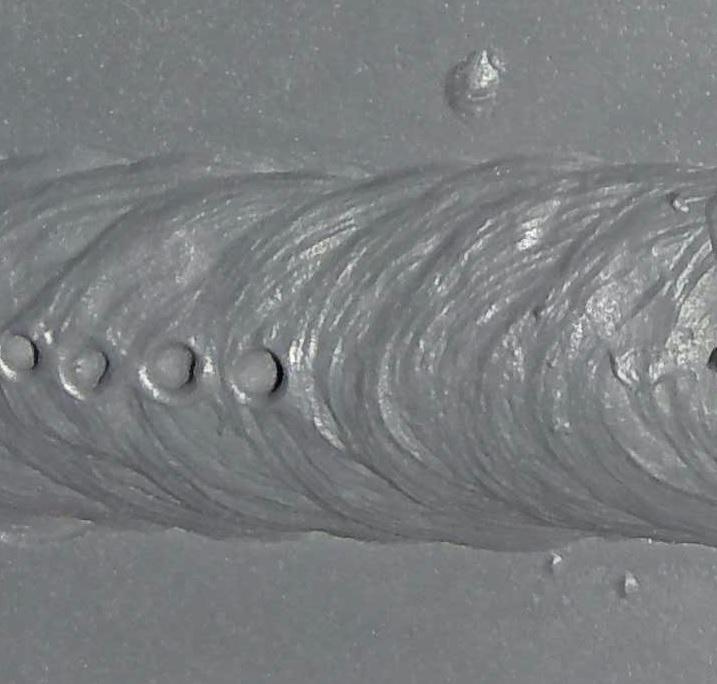Unraveling the Enigma of Porosity in Welding: Tips for Minimizing Defects and Taking Full Advantage Of Quality
In the intricate globe of welding, porosity remains a relentless difficulty that can dramatically affect the quality and stability of welded joints. Comprehending the elements that add to porosity formation is vital in the search of perfect welds. By untangling the mystery of porosity and implementing reliable approaches for issue reduction, welders can boost the requirements of their work to attain remarkable high quality end results. As we look into the depths of porosity in welding, revealing the keys to its avoidance and control will be vital for experts seeking to grasp the art of premium weldments.
Comprehending Porosity in Welding
Porosity in welding, a typical concern experienced by welders, refers to the presence of gas pockets or spaces in the bonded material, which can jeopardize the stability and top quality of the weld. These gas pockets are usually entraped during the welding procedure as a result of different elements such as improper protecting gas, polluted base products, or wrong welding specifications. The formation of porosity can weaken the weld, making it susceptible to breaking and deterioration, inevitably resulting in architectural failings.
By recognizing the value of maintaining appropriate gas shielding, making certain the tidiness of base products, and maximizing welding settings, welders can dramatically minimize the likelihood of porosity formation. In general, a comprehensive understanding of porosity in welding is crucial for welders to produce premium and long lasting welds.

Common Sources Of Porosity
When examining welding processes for potential quality concerns, understanding the usual causes of porosity is important for preserving weld stability and avoiding architectural failings. Porosity, characterized by the presence of dental caries or gaps in the weld steel, can significantly jeopardize the mechanical residential properties of a welded joint.
An additional prevalent root cause of porosity is the existence of wetness and contaminants on the surface area of the base metal or filler product. When welding materials are not appropriately cleaned or are subjected to high levels of moisture, the vaporization of these pollutants during welding can create voids within the weld grain. Furthermore, welding at improper parameters, such as excessively high travel speeds or currents, can create extreme turbulence in the weld pool, capturing gases and triggering porosity. By resolving these typical causes through correct gas shielding, material prep work, and adherence to optimal welding criteria, welders can minimize porosity and boost the top quality of their welds.
Strategies for Porosity Avoidance
Applying reliable safety nets is vital in decreasing the event of porosity in welding procedures. One method for porosity avoidance is ensuring proper cleaning of the base steel prior to welding. Impurities such as oil, grease, rust, continue reading this and paint can lead to porosity, so thorough cleansing using ideal solvents or mechanical techniques is vital.

One more key safety net is the option of the best welding consumables. Using high-quality filler products and more tips here protecting gases that are suitable for the base steel and welding procedure can considerably decrease the danger of porosity. Additionally, maintaining appropriate welding specifications, such as voltage, existing, take a trip speed, and gas flow rate, is crucial for porosity avoidance. Departing from the recommended settings can lead to incorrect gas coverage and inadequate blend, bring about porosity.
Furthermore, utilizing appropriate welding techniques, such as preserving a consistent traveling speed, electrode angle, and arc length, can help stop porosity (What is Porosity). Appropriate training of welders to guarantee they comply with finest methods and quality assurance procedures is additionally vital in reducing porosity issues in welding

Best Practices for High Quality Welds
One trick practice is preserving correct sanitation in the welding location. Thoroughly cleansing the workpiece and surrounding location before welding can aid minimize these concerns.
Another finest technique is to very carefully choose the proper welding specifications for the particular products being signed up with. Correct specification choice ensures ideal weld penetration, combination, and general top quality. Making use of high-grade welding consumables, such as electrodes and filler metals, can substantially impact the final weld top quality.
Significance of Porosity Control
Porosity control plays an important duty in ensuring the honesty and high quality of welding joints. Porosity, identified by the visibility of tooth cavities or spaces within the weld steel, you can check here can substantially endanger the mechanical properties and structural honesty of the weld. Extreme porosity damages the weld, making it much more vulnerable to breaking, rust, and general failure under functional tons.
Reliable porosity control is essential for maintaining the wanted mechanical residential properties, such as toughness, ductility, and toughness, of the welded joint. What is Porosity. By lessening porosity, welders can boost the total high quality and reliability of the weld, guaranteeing that it meets the efficiency requirements of the desired application
Furthermore, porosity control is important for accomplishing the wanted aesthetic appearance of the weld. Too much porosity not just compromises the weld but likewise takes away from its aesthetic appeal, which can be crucial in markets where appearances are necessary. Proper porosity control strategies, such as making use of the appropriate protecting gas, regulating the welding parameters, and guaranteeing proper cleanliness of the base products, are crucial for generating top notch welds with very little flaws.

Conclusion
In final thought, porosity in welding is a typical issue that can compromise the quality of the weld. It is crucial to regulate porosity in welding to make sure the integrity and strength of the last product.